Abstract
The published literature on Geography teaching in Higher Education (HE) has focused principally on advanced “western” countries such as the USA, UK and Australia. This paper contributes to a redressing of this imbalance by offering an account of the scale and character of Geography provision in Turkish Universities. It shows that almost all the 22 Universities providing Geography are in the state (rather than private) sector, with the majority of courses having been established in the last 20 years. The paper identifies some important differences between Geography courses in Turkey and those in countries such as the UK. Perhaps the most important is the extent to which Turkish Geography is focused on producing the nation’s supply of secondary school Geography teachers and is not yet seen as equipping students for a much wider range of careers and employment opportunities.
Introduction and aims
Given that Geography curricula typically have a strong international and cross-cultural dimension, it is perhaps ironic, and certainly disappointing, that so much of the published literature on HE Geography teaching focuses on a relatively narrow range of “western” countries, especially the USA, UK and Australia. There is, of course, some literature which highlights Geography in other settings (see, for example, papers by CitationKasimov et al., 2002; CitationKasimov et al., 2005; CitationKong, 2007; CitationLi et al., 2007; CitationSingh, 2009; CitationChang and Chang, 2010). And, thanks to the best efforts of journal editors and the work of bodies such as the International Network for Learning and Teaching in HE Geography, the old imbalance is slowly being addressed. However, there is a long way to go and there are still many parts of the world where little has been written (in English at least!) on HE Geography and where there is not yet a well-established culture of pedagogic research and publication in and about our discipline.
One rapidly industrialising country which has yet to make a real mark in the pedagogic geographical literature is Turkey. This is a nation of about 75 million people situated strategically at the interface between Europe and Asia. It has a large HE sector and an economy which in recent years has been enjoying rates of growth which are more commonly associated with China and the Far East. The aims of this paper are therefore to introduce Planet readers to the principal features of HE Geography provision in Turkey and to make some comparisons with the position in the UK (with which most Planet readers will already be familiar). However, the paper opens with a brief review of the Turkish HE system as a whole in order to outline the context within which Turkey’s HE Geographers work. This is a topic on which little has been written even by Turkish Geographers, their focus to date having been more on education at school level (CitationTas, 2005; CitationYasar and Seremet, 2009).
Higher education in Turkey
As a result of major expansion during the last 20 or 30 years, Turkey now has 164 Higher Education Institutions (HEIs). provides a map showing their spatial distribution. Generally speaking, the largest and oldest HEIs are in the major cities, such as Istanbul, Ankara, Izmir, Eskisehir, Konya and Kayseri. As illustrated in , many of the more recently established/designated HEIs are on the eastern side of the country which is generally less well developed and where the government has been particularly keen to open up and improve access to Higher Education opportunities. About two-thirds (102) of Turkey’s HEIs are state funded with most of the remaining 62 run by charitable and voluntary organisations (CitationHECoT, 2011), a pattern which is in marked contrast to the UK where the non-government sector barely exists. As shown on the map, there are no less than 30 non-government HEIs in the Istanbul area alone (in addition to nine which are state funded) ().
Figure 1: The distribution of Higher Education Institutions in Turkey (by 2010).
Source: Adapted from the Higher Education branch of Ministry of Education (2010) (CitationMoE, 2010b).
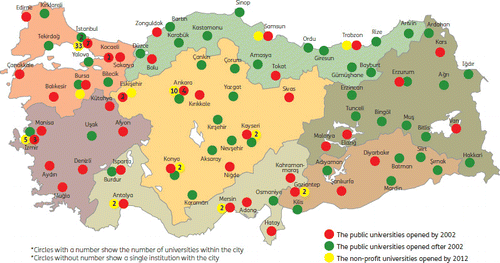
Figure 2: Summer at Yeditepe University (Istanbul) campus (private university), (Image: ©yeditepe.edu.tr).
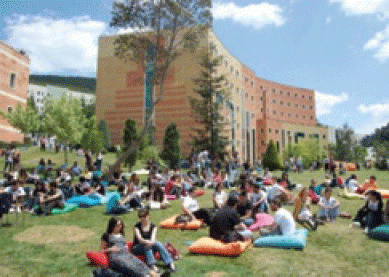
The dramatic growth in Turkey’s student numbers is clearly illustrated in . At the start of the 1980s Turkey had some 250,000 HE students: the current figure is over 3,500,000. Additionally, the participation rate has increased from 19.5% in 1997 to 30.4% in 2010 (CitationTurkstat, 2010). This means that although participation rates have grown considerably in Turkey, they remain below those in the UK (though direct comparisons are made difficult by the fact that almost a third of Turkey’s HEI students are on two year technical/professional courses referred to as “Associate Degrees”). Fees are generally substantially lower in Turkey than the UK and are at a level unlikely to significantly impede further expansion.
During the last couple of decades, alongside substantial growth, the two main drivers for change in Turkey’s HE system have been the establishment in 1981 of the Higher Education Council of Turkey (HECoT) and the impact of the Bologna process. HECoT has substantial powers across all HEIs, both state and non-state (CitationTansel and Bircan, 2006) and as a result, by UK standards, the Turkish HE sector is quite centralised and bureaucratic (CitationMizikaci, 2003). For example, every HEI is expected to give roughly equal priority to HECoT’s three mission areas, namely teaching, research and public/community service.
Figure 3: The total number of HE students in Turkish HEIs (CitationOSYM, 1982, Citation1989, Citation2001, Citation2002, Citation2003, Citation2004, Citation2005, Citation2006, Citation2007, Citation2008, Citation2009, 2010).

Nonetheless, HECoT’s strategic report in 2007 highlighted the need for the sector to become more flexible and to respond more effectively to the rapidly changing needs of the country’s increasingly knowledge-based economy. The report also focused on the need to increase graduate numbers, to raise teaching quality, to enhance the sector’s international reputation and to offer more opportunities for CPD, up-skilling and lifelong learning (CitationHECoT, 2007). These kinds of priorities will align Turkey’s HE system more closely with that of the UK (and other advanced industrial economies). However, one important remaining difference is the relative lack of institutional autonomy which may prevent Turkey’s HEIs from playing sufficiently to their individual strengths.
As a nominee country for EU membership, Turkey has been involved in the Bologna process since 2001. As a result, growing integration into the European Higher Education Area (EHEA) has brought a number of issues onto HECoT’s agenda. Of these, perhaps the most important has been teaching quality enhancement and assurance. HECoT now expects Turkey’s HEIs to have in place robust quality systems for both programme design and delivery. Another important consequence of the Bologna process is that HECoT is currently working on an HE Qualifications Framework setting out in broad terms the standards and outcomes to be achieved at different degree levels. Turkey is also making increasing use of Intended Learning Outcomes (ILOs) for individual degree programmes (including Geography) and of the European Credit Transfer System (ECTS) which allows students to move more easily between courses and countries (CitationHECoT, 2010).
Figure 4: Istanbul University (the oldest university in Turkey)
(Image: www.hurriyetdailynews.com)
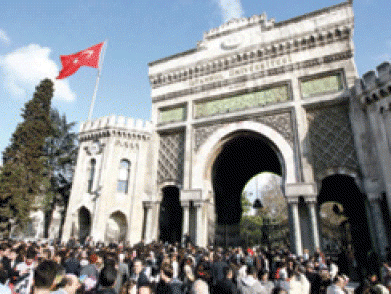
Geography degrees in Turkey
Turkey’s first Geography degrees were established in the country’s two principal cities — Istanbul in the 1930s and Ankara in the 1940s (). They were pioneered by what was essentially Turkey’s original generation of Geography lecturers. The early degrees fell into three categories: Physical Geography and Geology, Human Geography and Regional Geography. These three different programmes were the dominant models (CitationErinc, 1973) until HECoT’s establishment in 1981, which was followed by a new regulation combining the three programmes into a new single, holistic degree in Geography.
A Student Selection and Placement Centre report (OSYM, 2010) notes that there are currently 22 departments offering Geography degrees in Turkey. Only four are in long-established universities, namely Istanbul, Ankara, Ege and Erzurum. The great majority (18) are in universities which were established/designated since 1992 — the year of a major re-organisation of HE in Turkey (), as it was, (coincidentally) in the UK. No less than 21 of the 22 Geography courses are in state HEIs, the single exception being Fatih University. Non-state Universities tend to be focused more on vocational and professional qualifications. In general, the old universities (pre-1992) are the largest and are considered typically to have the best teaching and research facilities. The largest Geography department of all is at Istanbul University and has 31 academic staff.
Figure 5: A view of Canakkale Onsekiz Mart University’s Campus (a post-1992 university)
(Image: www.canakkaletr.com)
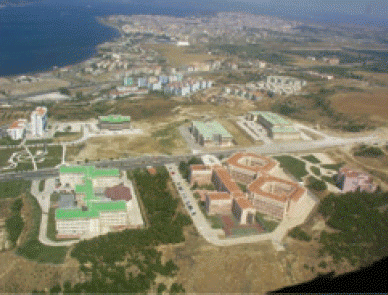
provides a map showing the spatial distribution of Turkey’s Geography undergraduate provision and the admission numbers (year one entry) for each institution. These range from 45 to 170 but the individual figures depend on decisions made by HECoT and can vary from year to year. also highlights the dominance of post-1992 universities amongst Geography providers. The reasons for this are complex but relate in part to teacher-training institutions becoming components of “new” universities and their Geography staff wanting to diversify into “mainstream” Geography alongside their existing role within Education Faculties.
According to OSYM’s 2010 statistics, there were Geography totals of 5158 undergraduates and 629 post graduates in 2009–10. shows that overall Geography numbers have more than doubled in the past ten years. The fact that sizeable parts of the discipline can be taught without major infrastructure and equipment costs may have facilitated this expansion. That our subject can be positioned within both Arts and Science Faculties has also been helpful, in that faculties in both these key areas are a condition for university designation. However, despite this record of growth, it has to be said that in an HE sector of 3.5 million students, Geography remains a tiny component.
Figure 6: The distribution of Geography Departments in Turkey (Adapted from CitationSeremet, 2008)
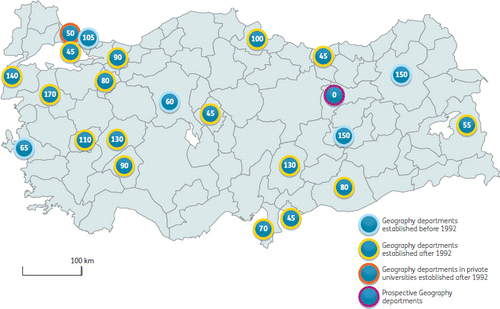
Table 1: Total number of Undergraduate, Post Graduate Students and Academic Staff in Geography departments during the period of 2000–2010.
The curricula for Turkish Geography degrees are typically wide-ranging in their coverage, spanning the principal aspects of the subject including, for example, geomorphology and bio-geography on the physical side, and economic and urban Geography from the social science arena. As is common in the UK and elsewhere, final year modules tend to be more specialised than those in earlier parts of the programmes. The final year (year four in Turkey) also involves a dissertation. Fieldwork is almost always within Turkey and it is noticeable that many of the other modules also focus on Turkey either regionally (for example, Central Anatolia) or thematically (for example, Turkey’s geomorphology). There is no equivalent to the UK Quality Assurance Agency’s Geography Benchmark Statement and there are no detailed guidance or specifications on areas such as subject content or teaching methods. Most students study “wall to wall” Geography, without the requirement, or often the opportunity, to take modules from different disciplines. Within Geography the amount of choice offered varies (as in the UK) principally according to the size of department, with more staff leading to more choice and more optional modules. As shown in , the average student/staff ratio in Turkish Geography is 44:1, which is very high by UK standards.
In terms of teaching methods, there is a heavy reliance on lecturing and textbooks (CitationSeremet, 2008). This may reflect the high student:staff ratios. Seremet’s work also shows that teaching methods tend to reflect each module’s learning objectives and subject content, as well as class size. Fieldwork is generally based on the traditional “Cooks Tour” (with an emphasis on lecturing in the field) approach rather than on student-based investigations or problem-solving tasks. In recent years GIS has begun to feature in a small number of Geography courses but it is not yet clear whether this kind of curriculum innovation is leading to more challenging and varied forms of teaching. With respect to assessment, there is a considerable emphasis on unseen written examinations.
After completing their degree, the dominant area of employment for Geography graduates is secondary school teaching. By contrast, in the UK the employment patterns are much more varied, with students competing for a much wider range of occupations and posts. In both countries there is a shortage of reliable data on long-term career patterns, though recently the Turkish government’s Human Resources department revealed that there are 64 Geographers working in central government, the majority of whom are employed in the Meteorological Office and the Mineral Research and Exploration General Directorate (CitationDPB, 2007). Despite the shortage of detailed and reliable data, there is no doubt that the great majority of Turkey’s Geographers proceed (or hope to proceed!) into teaching. State secondary schools and private tutoring institutions (known as “Dershane”) which prepare students for university entrance exams are the main places of employment. In the last two years the Ministry of Education (MoE) has offered 805 positions for Geography teachers (CitationMoE, 2009; CitationMoE, 2010a). This compares with a total of 1,307 Geography graduates (who would then need to take an 18 month certificate course to qualify as teachers). However, there were another 517 students who were graduating from five-year Geography teacher training courses (based in Education Faculties). So, there are clearly many more students likely to be looking for jobs as Geography teachers than there are posts available.
In Turkey the traditional connection between Geography and teaching has been underpinned by the large numbers of teachers needed because the subject is normally compulsory in Turkey until the age of 16 (unlike in the UK where Geography is only compulsory up to the age of 14). More recently, the need for teachers has been reinforced by the subject’s inclusion in a number of pre-university technical and professional courses (CitationYasar and Seremet, 2009). Moreover, this close alignment between Geography and teaching could well intensify further because the government is currently encouraging the inclusion of education/teaching modules within “mainstream” Geography degrees. (This would avert the need to study for a “top-up” teaching certificate.) Any understanding of HE Geography in Turkey therefore clearly needs to acknowledge the extent to which the subject is perceived by government and by the wider public as essentially preparing students for a future in some form of teaching.
Summary and conclusions
With its large population and rapidly expanding economy, Turkey clearly needs its 164 universities and 3.5 million students. It is modernising its HE system to align more closely with the Bologna process and is introducing the kinds of quality assurance and credit- rating procedures which have long been familiar in the UK.
Within Turkish HE as a whole, Geography occupies a very small niche and its courses are designed and delivered in fairly traditional ways with an emphasis on academic knowledge, lectures and unseen examinations. Geography’s strength in Turkey, as in many other parts of Europe (see CitationRodzos and Charzynski, 2005; CitationSchminck and Mentz, 2005), has been in secondary schools where it features more prominently than in the UK. However although this situation has created a steady and at times growing demand in Turkey for Geographers as teachers, this strong focus on a single career may have placed a ceiling on the discipline’s size and aspirations. In the UK, by contrast, only a small (though important) minority of Geography graduates proceed into teaching and the HE Geography curriculum is designed to give students the skills, knowledge and aptitudes to enable them to pursue a much wider range of careers. Of course, changing the long-established career patterns in Turkey will not be achieved quickly and account must be taken of differences in the two national graduate labour markets. Nonetheless, this wider view of employability (as well as more varied and interactive teaching approaches), is what Turkish Geography staff might wish to learn from the UK. Equally, however, what the UK might learn from Turkey is how geography has been able to secure and maintain such a prominent place in the school curriculum.
Pictures
http://www.cafebabel.co.uk/article/30770/istanbul-erasmus-experience-university-yeditepe.html Accessed 15.03.2011
http://www.hurriyetdailynews.com/n.php?n=students-protest-for-the-removal-of-okm-2010-08-16 Accessed 15.03.2011
http://www.canakkaletr.com/canakkale-onsekiz-martuniversitesi.html#axzz1btOXVCq9 Accessed 15.03.2011
References
- ChangC. and ChangY. 2010 College Science Students’ Perception Gaps in Preferred-Actual Learning Environment in a Reformed Introductory Earth Science Course in Taiwan, Journal of Geography in Higher Education 34, 2, 187-203
- DPB 2007 Statistics for Employees as Geographers (personal inquiry of the author), Ankara, Devlet Personel Daire Baskanligi
- ErincS. 1973 Geography in the fiftyith anniversary of the Turkish Republic (in Turkish), Ankara, Basbakanlik Kultur Mustersarligi
- HECoT 2007 Higher Education Strategy of Turkey (in Turkish), Ankara, Higher Education Institution of Turkey
- HECoT 2010 Higher Education Systems in Turkey, Ankara, Higher Education Institution of Turkey
- HECoT 2011 Turkish Universities (in Turkish), http://www.yok.gov.tr/content/view/527/222/lang,tr Accessed 04.03.2011
- KasimovN. S., MalkhazovaS. M., RomanovaE. P. and Chalkley,B. S. 2002 Environmental Education in Russian Universities, Journal of Geography in Higher Education, 26, 2, 149 - 157
- KasimovN. S., MalkhazovaS. M. and RomanovaE. P. 2005 Environmental Education for Sustainable Development in Russia, Journal of Geography in Higher Education, 29, 1, 49 - 59
- KongL. 2007 Geography’s Place in Higher Education in Singapore, Journal of Geography in Higher Education, 31, 1, 39 - 56
- LiX., KongY. and PengB. 2007 Development of Geography in Higher Education in China since 1980, Journal of Geography in Higher Education, 31, 1, 19 - 37
- MizikaciF. 2003 Quality Systems and Accreditation in Higher Education: an overview of Turkish Higher Education, Quality in Higher Education, 9, 1, 95-106
- MoE2009 Guidance for Teacher Appointments 2009, H. R. Office. Ankara, Ministry of Education
- MoE2010a Guidance for Teacher Appointments 2010, H. R. Office. Ankara, Ministry of Education.
- MoE2010b Turkish Higher Education Institutions, http://yogm.meb.gov.tr/universiteler.htm Accessed 18.11.2010
- OSYM1982 Turkish Higher Education Statistic 1981-1982, Ankara, OSYM
- OSYM1989 Turkish Higher Education Statistic 1988-1989, Ankara, OSYM
- OSYM2001 Turkish Higher Education Statistic 2000-2001, Ankara, OSYM
- OSYM2002 Turkish Higher Education Statistic 2001-2002, Ankara, OSYM
- OSYM2003 Turkish Higher Education Statistic 2002-2003, Ankara, OSYM
- OSYM2004 Turkish Higher Education Statistic 2003-2004, Ankara, OSYM
- OSYM2005 Turkish Higher Education Statistic 2004-2005, Ankara, OSYM
- OSYM2006 Turkish Higher Education Statistic 2005-2006, Ankara, OSYM
- OSYM2007 Turkish Higher Education Statistic 2006-2007, Ankara, OSYM
- OSYM2008 Turkish Higher Education Statistic 2007-2008, Ankara, OSYM
- OSYM2009 Turkish Higher Education Statistic 2008-2009, Ankara, OSYM
- OSYM2010a Turkish Higher Education Statistic 2009-2010, Ankara, OSYM
- OSYM2010b Guidance booklet for the placement to Turkish Universities, Ankara, OSYM
- RodzosJ. and CharzynskiP. 2005 Training Geography teachers in Poland with regard to changes in school education, in DonertK. and CharzynskiP. (Eds.), Changing Horizons in Geography Education, HERODOT publications, Liverpool, UK
- SchminckD. and MentzO. 2005 Application of GIS in teacher training at the University of Education Karlsruhe and the University of Education Freiburg Germany, in DonertK. (Ed.), HE GIS in Geography; A European perspective, HERODOT publications, Liverpool, UK
- SeremetM. 2008 Evaluation of the Teaching Methods Used in Geography Teaching in Higher Education according to the Opinion of the Students and Academic Staff (in Turkish), Canakkale, Canakkale Onsekiz Mart University, Unpublished Masters Thesis
- SinghR. S. 2009 Identity and Image of Indian Geography: The People’s Perspective, Journal of Geography in Higher Education, 33, 3, 375 - 391
- TanselA. and BircanF. 2006 Demand for education in Turkey: A tobit analysis of private tutoring expenditures, Economics of Education Review, 25, 3, 303-313
- TasH.I. 2005 Geographic Education in Turkish High Schools, Journal of Geography, Jan/Feb 2005; 104, 1, 35
- Turkstat 2010 Educational Statistics, http://www.turkstat.gov.tr/VeriBilgi.do?tb_id=14&ust_id=5 Accessed 14 June 2012
- YasarO. and SeremetM. 2009 An Evaluation of Changes to the Secondary School Geography Curriculum in Turkey in 2005, International Research in Geographical and Environmental Education, 18, 3, 171-184